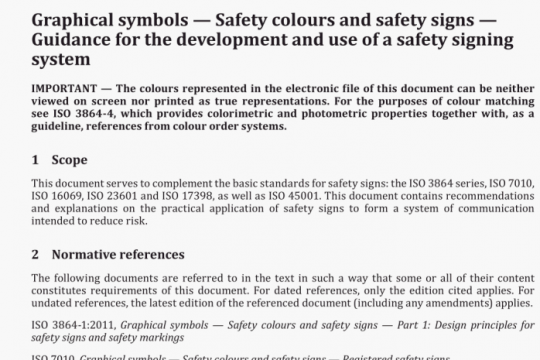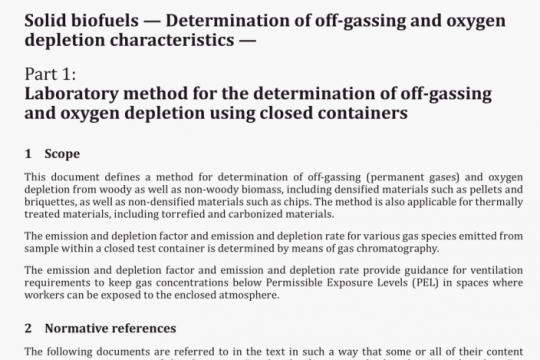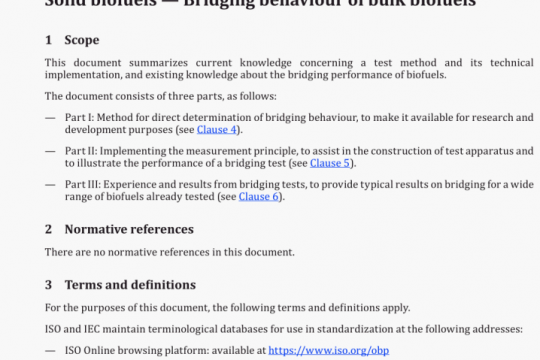ISO 22581 pdf free download
ISO 22581-2021 pdf free download.Surface chemical analysis一Near real-time information from the X-ray photoelectron spectroscopy survey scan – Rules for identification of, and correction for, surface contamination by carbon-containing compounds.
5.3 Recognition of contamination
The correct identification of a given Cis peaks as being derived from and indicative of the presence of a thin film of adsorbed organic compounds is important. The ubiquitous character of a contamination film has given rise to the advice that its Cis peak can he used as a reference peak (nominally 285 eV) for correction of any electrostatic charging (see Iso 19318); it is important that it is not confused with an actual component of the material surface; and it is important that it is recognised as having the characteristics of a surface film since It is only in this case that the whole spectrum can be corrected for the consequential attenuation. Recognition is based on a mix of probabilities that a contamination is present; that it is not anticipated to be present in the material sample; and that it has the characteristics of a surface film. The means to assess that these attributes are associated with the Cis peak are outlined in the following paragraphs. Each single identifier of an attribute is given in Table 1 in the form of ‘If— Then’ statements which can be utilised for computer-based, near real-time correction of the XP spectrum for the effect of a contamination film.
In published workLl-ll.U2UUI it was shown that the identification and characterisation of a contamination layer is reached by setting a goal, defined by an object, ‘Carbon_Contamination’, having the value ‘Yes’. The achievement of this goal marks the end of a stage in the analysis and enables further interpretation of the spectrum. It should be noted that analysts who are experts in reviewing the XPS survey spectrum will recognise the Cis peak on many materials for what it is — contamination. For them, this document will give some guidance in answering the client who asks ‘how do you know’. For non-experts it will give some assurance that they may safely assume the carbon peak to be generated by contamination but for those designing machine-assisted interpretation of a survey spectrum the analysis set out here is essential. A useful discussion of the suggested methodology, and possible pitfalls have been given by Veghl1M and an example of its actual use in near real-time surface analysis has been given by Lea et al(1-l.
To reach the goal with 100 % certainty, it shall be established:
— that a photoelectron peak for carbon is present in the spectrum;
— that it is not expected for carbon to be part of the sample material, i.e. it is adventitious in character;
— that it has certain characteristics of contamination carbon;
— that it has an impact on the spectrum consistent with it being present in a thin surface layer;
— that its presence is part of a reaction layer formed by interaction with the environment.
5.3.1 Construction of rules based on sample description
The methodology outlined in this document is intended for use in real, or near real-time interpretation of the survey scan in XPS analysis of a surface. It is further assumed that the survey scan has been acquired by the method recommended by IUVSTA Workshop 34, i.e. over a range set to include the C KVV Auger peak and with a step size of <0,4 eVl2l.
Once the survey scan is completed, the first Rule comes into operation, but this does require that a peak in the expected location of the Cis can be identified. If the Cis peak is to be found automatically, then
© ISO 2021 — All rights reserved
ISO 22581:2021(E)
any specimen charging shall be small or otherwise known so that its effect on the apparent energy of the peak can be compensated. In the event that there are no obvious conflicts with the binding energy of the Cis peak, then the value of an object, Carbon_is, can be given the value Yes, or default to No, according to whether there is a peak at a binding energy of 285 eV ± 0,4 eV. The rules used in this document are given in Table 1 and are discussed individually in the following paragraphs.
If Carbon_is is Yes and Carbon_Sample is No then Carbon…Contamination_1 Is Yes 1).
Rule 1 merely expresses what is obvious, that if Cis is identified in the spectrum then the element carbon will contribute to the overall analysis of the material, even if this is not expected by the sample provider. There is thus a possibility that a contamination film is present on the surface.
This rule is also used to stop the automated procedure, i.e. if carbon is expected to be present in the sample then it will not be possible to establish whether there is a contamination layer without interactive examination of the spectra by the analyst.
An important indicator of the presence of a contamination film comes from prior knowledge of the expected composition and the history of the sample. This information will be supplied by the owner of the material to be analysed and is discussed in more detail in the following paragraph. However, this knowledge is encapsulated in Rule 2:
If Sample is Aqueous_Exposed or Air_Exposed or Spectrometer_Unbaked then Carbon_Contamination_2 is Yes (2). These two Rules illustrate the use of Objects, such as Carbon_Sample, or Carbon_ Contamination that can take values of Yes, or left at the default value of No. Carbon_Contamination is an example of an Object that can be given values from the operation of two or more rules. To record these values a ‘counter’, N, has been concatenated to the Object, i.e. Carbon_Contamination..N so as to be able to group these values, enable consensus to be reached, and set the value of the un-concatenated Object, Carbon_Contamination to Yes or defaulted to No. Objects typically take the values Yes or No, according to whether or not they are satisfied by the operation of a Rule or Rules. The Objects used in this document are defined in Table 2.
5.3.2 Rules for use of the sample history
The most likely source of carbon contamination arises from initial collection of the sample, its subsequent handling and the conditions of transport. Little can be done to ameliorate contamination arising during collection; for example, electrodes are likely to pick up contamination as they are removed through the meniscus layer of the electrolyte and many samples of technological interest will suffer from similar problems during collection. Transport of the sample in plastic bags is also endemic, and clear instructions need to be issued to clients of a user laboratory. Thus the history of the sample can help in establishing an opinion that the carbon observed in the spectrum is a contamination film; thus building on knowledge that contamination will arise from exposure to the environment. In one- to-one discussions between analyst and client, the history can be recorded but such ‘surgery’ type interviews are time consuming and expensive. Thus, a succinct means of establishing relevant history is necessary for an automatic appraisal of the survey scan. An ideal description of the sample might include the question: ‘has the sample been exposed to unfiltered air or other gaseous atmosphere or to an aqueous environment? A yes or no answer is all that is required to set a value for Carbon_ contamination_2. This will be recorded as one piece of evidence by Rule 2, given in Table_i. A suggested route giving a sequence by which the following rules might be applied is given in Annex A.ISO 22581 pdf download.




